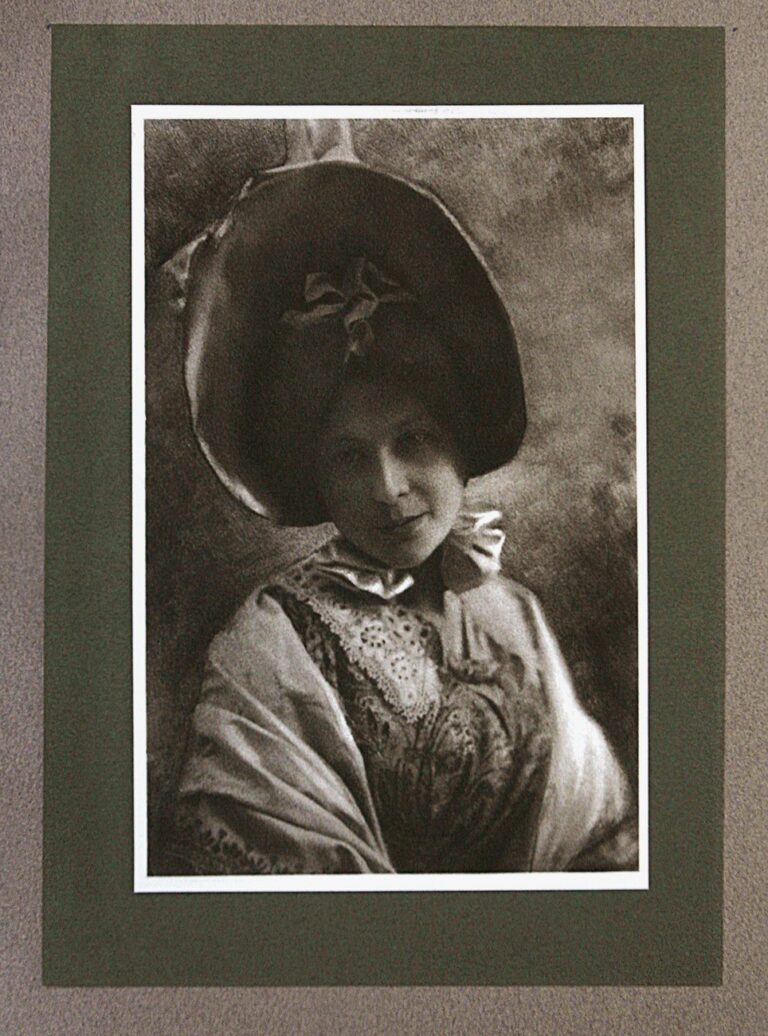
San Vigilio | San Vigilio Point from Lake Garda
Photographed from Lake Garda, the largest lake in Italy, this view from a gum print shows Punta San Vigilio, (San Vigilio Point) part of the municipality of Garda in the province of Verona. From LAKEGARDA guide:
This enchanting peninsula, owned by the Counts Guarienti di Brenzone, is filled with art, history, and nature, creating a captivating ambiance. Central to its allure is Villa Guarienti, a residence dating back to Roman times, and the Locanda San Vigilio, (shown at center of photograph-editor) constructed in the 16th century by the humanist Agostino Brenzoni, designed by the Veronese architect Sanmicheli. This historic inn, now a hotel and restaurant, features an exquisite Italian garden with statues and terraces overlooking the lake.
✻ ✻ ✻ ✻ ✻
Anyone of rank and name in Augsburg had his portrait taken by Siemssen. (1.)
Hans Siemssen: 1866-1934
For the first three decades of the 20th Century, the commercial photographic studio of Hans Siemssen at Bahnhofstrasse 12½ & 10 in Augsburg was the place to have your portrait taken at his self-proclaimed “Studio for Modern Art Photography”. On his death in 1934, he was succeeded in the family business by son Walter Siemssen (1927-1945) and then daughter-in-law Christel Siemssen. (1945-1963) From the 2004 volume Photography in Augsburg, 1839 to 1900, we learn about the location of the Augsburg studio and some background:
Just a short distance from the Martin brothers stands Augsburg’s most beautiful former photographer’s house, although with its magnificent Art Nouveau façade it does not border directly on Bahnhofstrasse, but can be reached via a driveway behind house number 10. Its inscription still reads “Court Photographer Siemssen”. The house, for which the construction contract was awarded in 1900, is not only interesting for its impressive façade with the portal appropriate to a court photographer’s studio. Hans Siemssen from Lübeck, the studio founder, came to Augsburg via Amberg in 1893 and established himself as a photo artist. Anyone of rank and name in Augsburg had his portrait taken by Siemssen. From March 1899 he was allowed to call himself court photographer. A photo cardboard from 1912 lists a number of other awards and titles. His son and daughter-in-law maintained the high standard. In 1948, Christel and Walter Siemssen celebrated the 100,000th portrait in the company’s history, and at the end of 1963 they closed the studio. (2.)
The volume further reproduces the verso of a photograph (undated) with the following imprint: King Bavarian Court Photographer Hans Siemssen: Court Photographer his Royal Highness the Prince Ludwig of Bavaria – Augsburg – Bahnhofstrasse 10- Studio for Modern Art Photography; and listing the following awards and citations:
GRAND DUKE OF HESSE STATE MEDAL –WORLD EXHIBITION ST. LOUIS SILVER MEDAL- BAVARIAN STATE MEDAL IN GOLD- FRANKFURT GOLD MEDAL • JUDGE INTERNAL PHOTOGRAPHER- EXHIBITION DRESDEN 1909- HONORARY PLAQUE DRESDEN- GOLDEN PROGRESS MEDAL OF THE SOUTH GERMAN PHOTOGRAPHER CLUB 1910-WORLD EXHIBITION TURIN- GOLDEN MEDAL- 1912 DÜHRKOOP MEDAL. (3.)
- Excerpt: Fotografie in Augsburg, 1839 bis 1900: mit einem Bildteil aus den Fotoschätzen des Stadtarchivs Augsburg: Franz Häussler, Wißner-Verlag, 2004 – Augsburg (Germany) p. 39
- Ibid, p. 39
- Ibid, p.132



